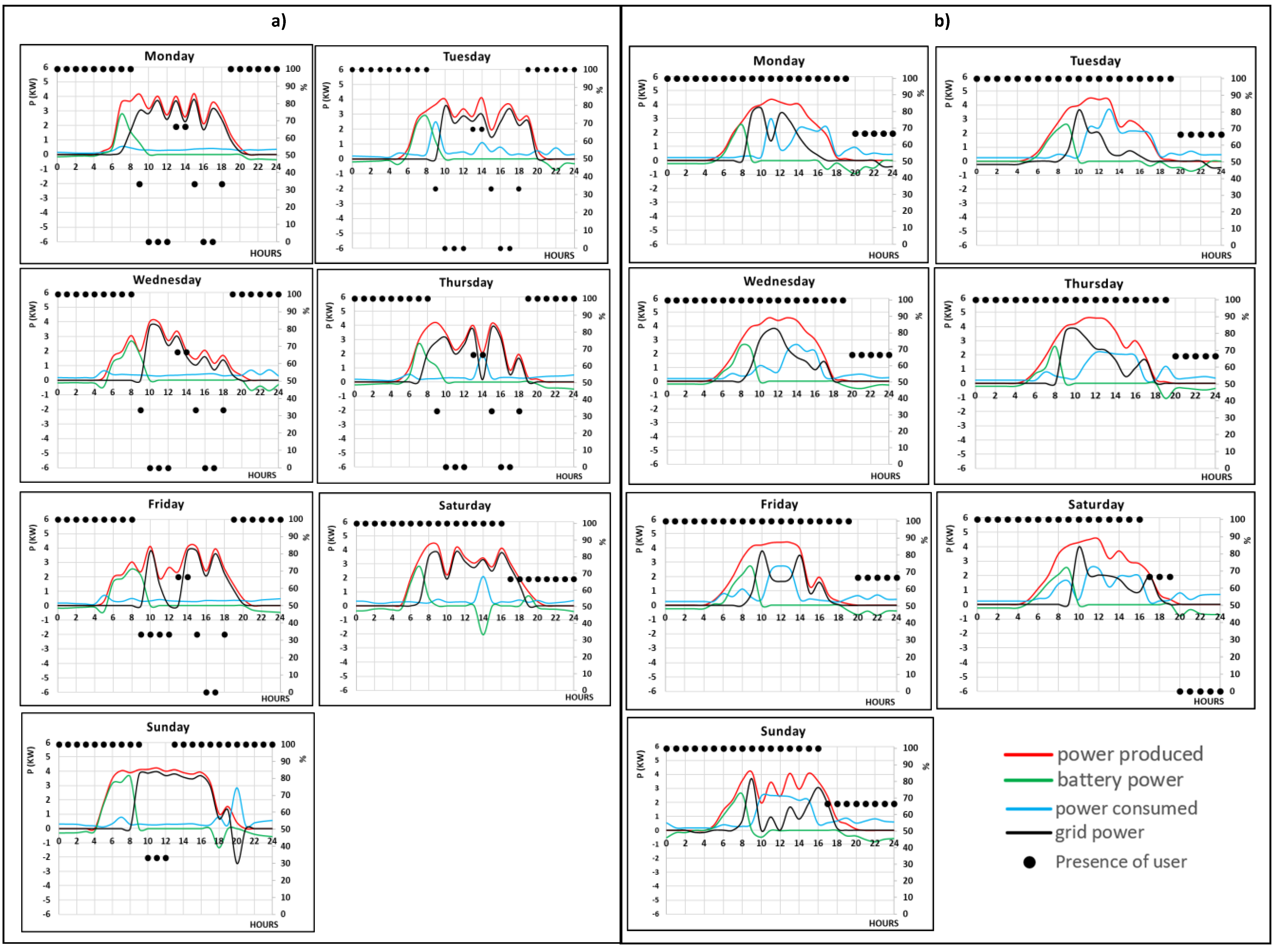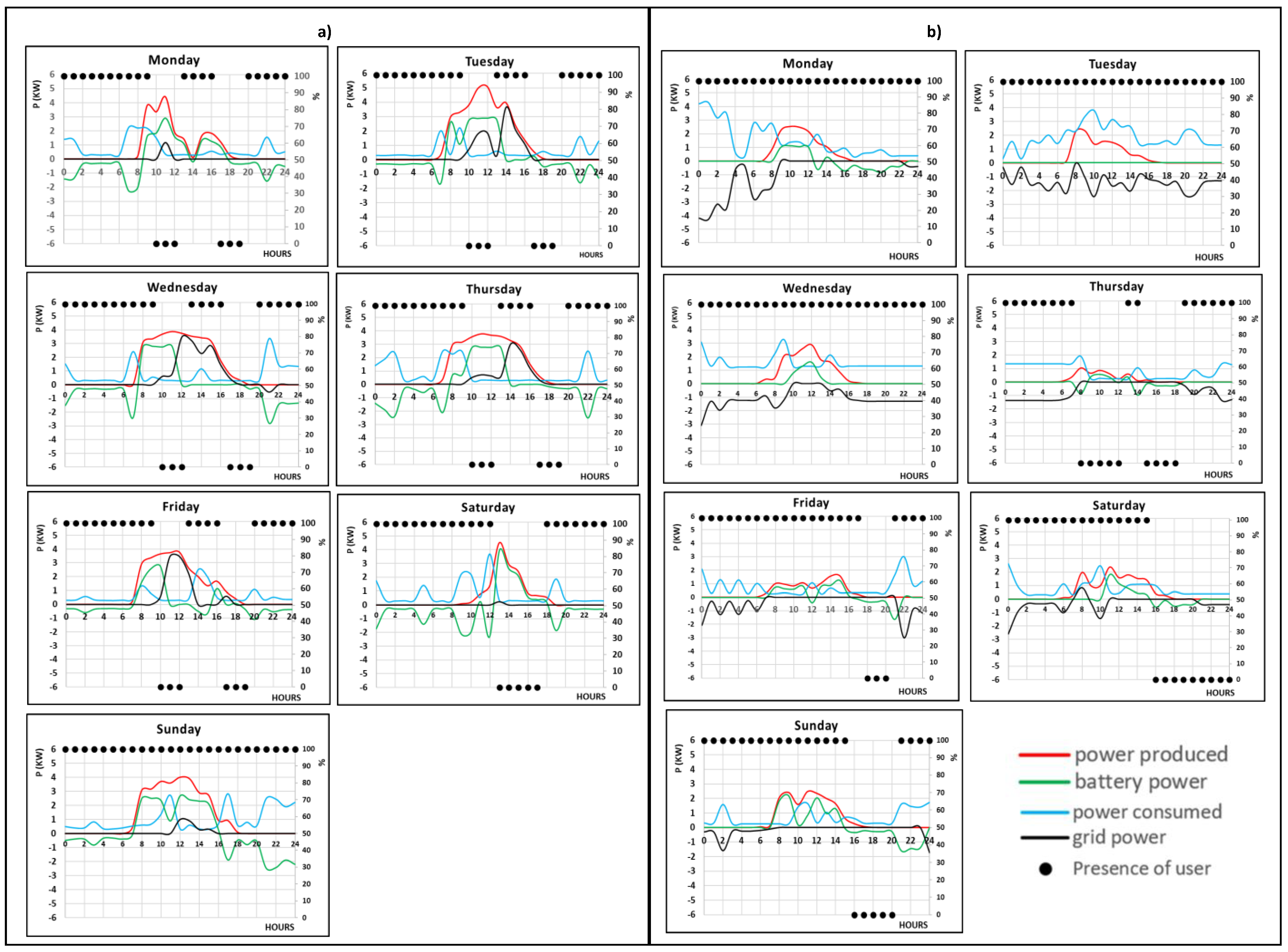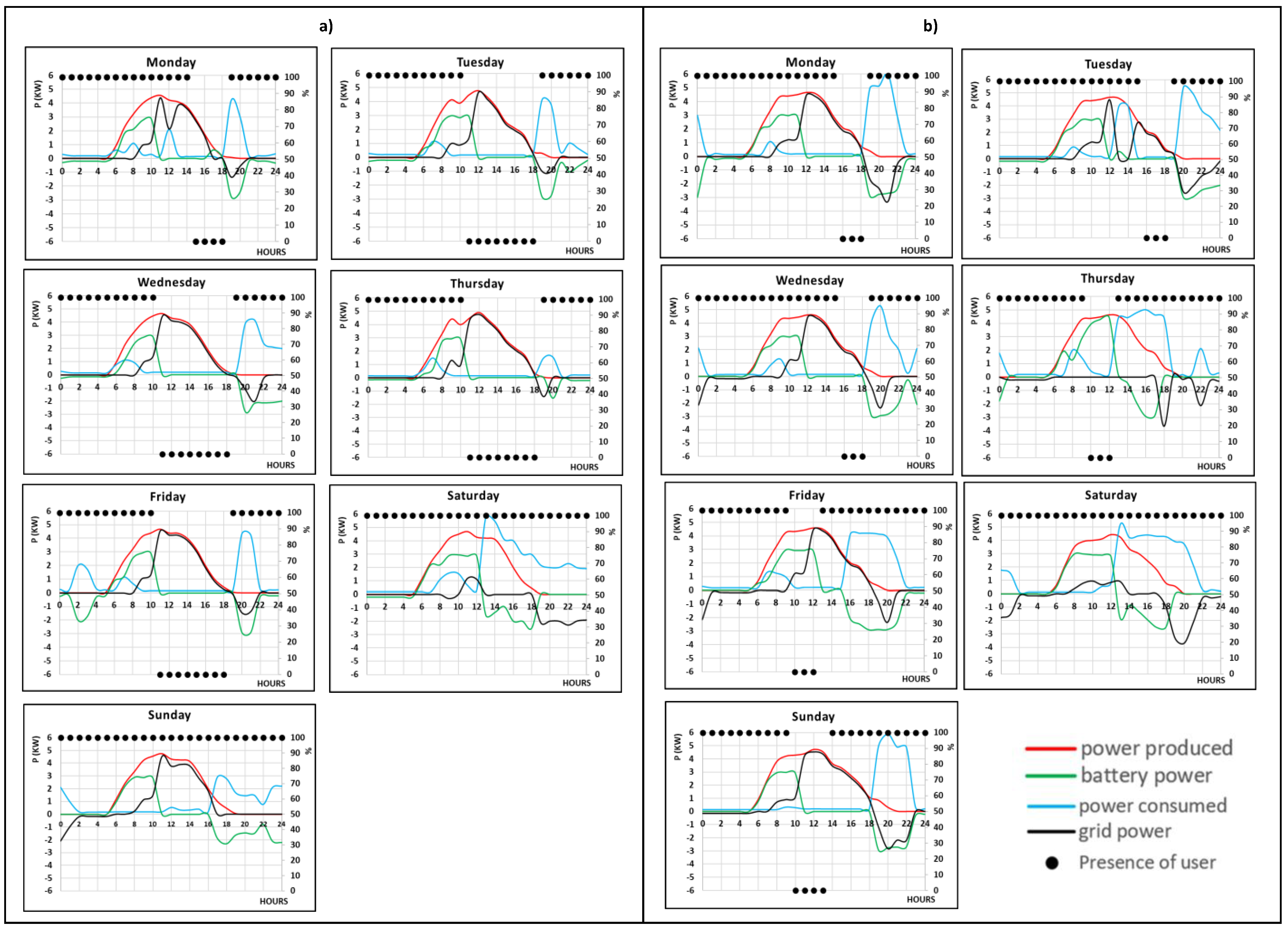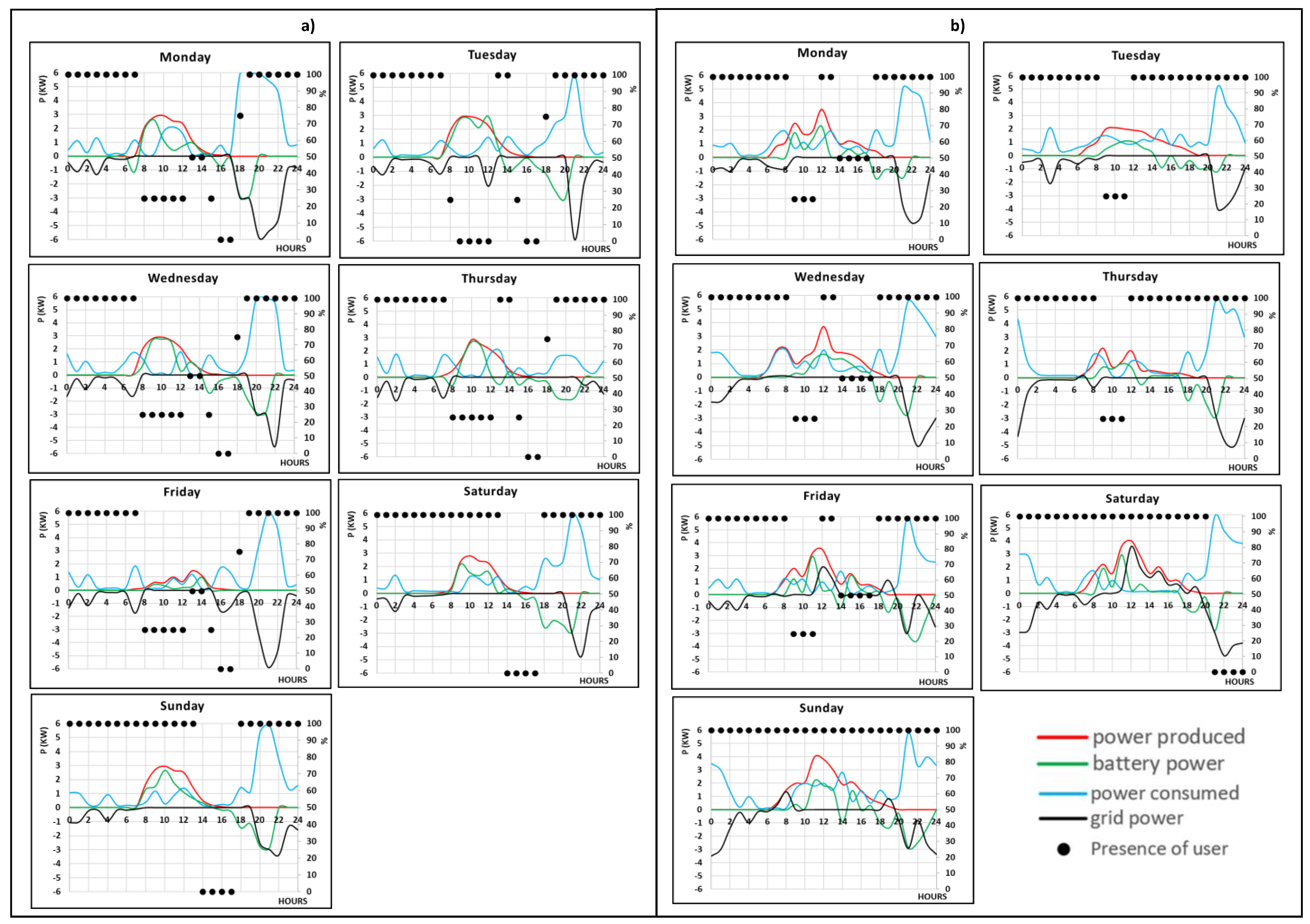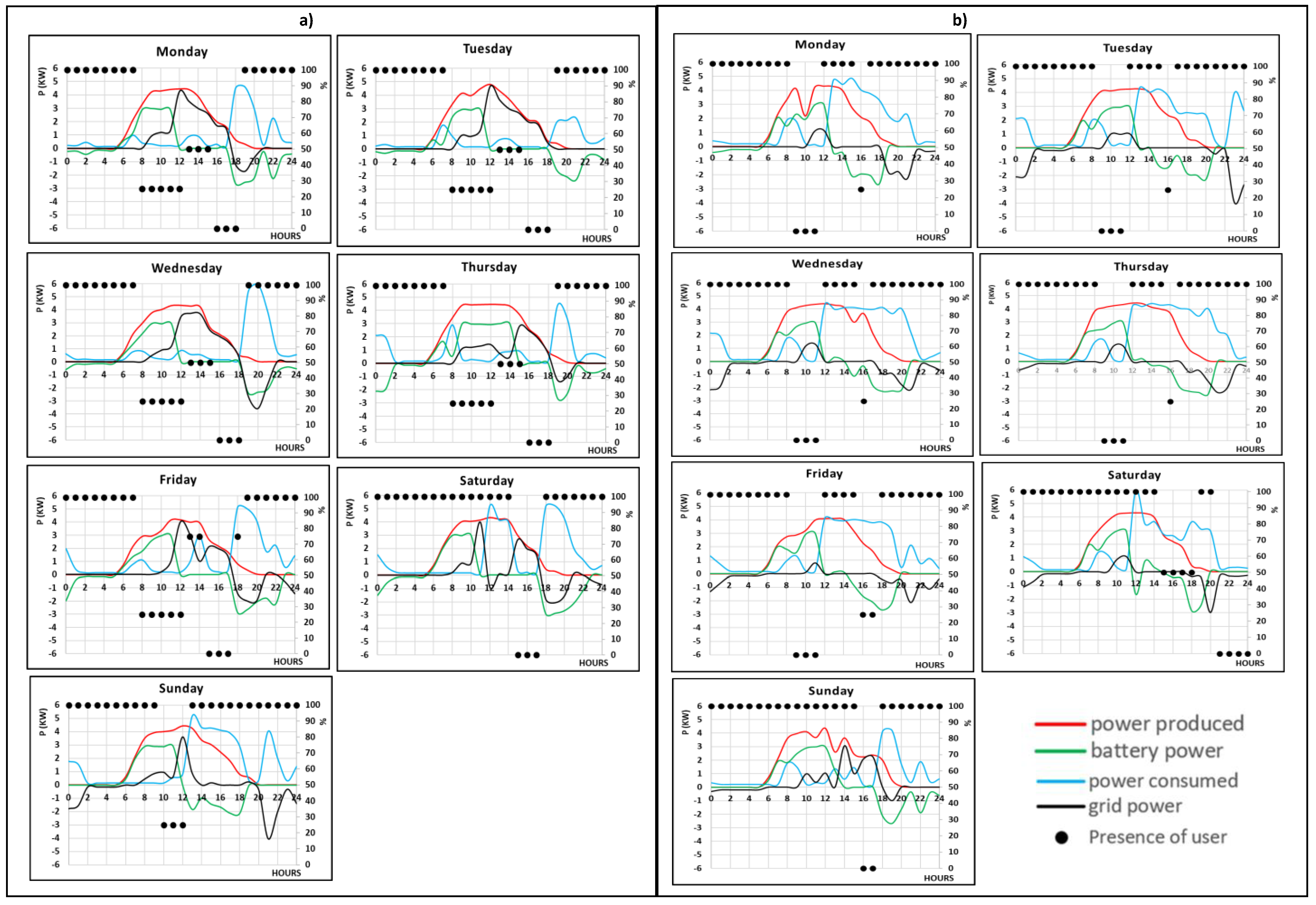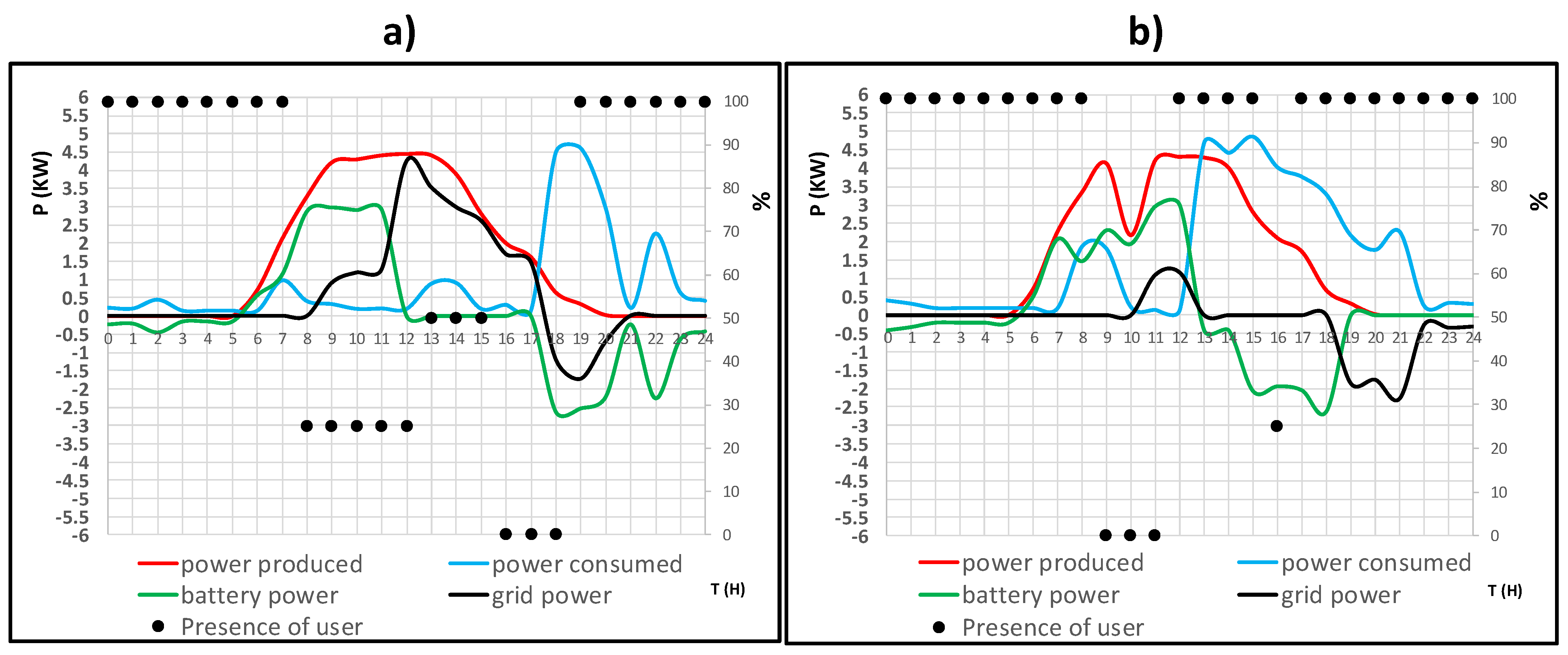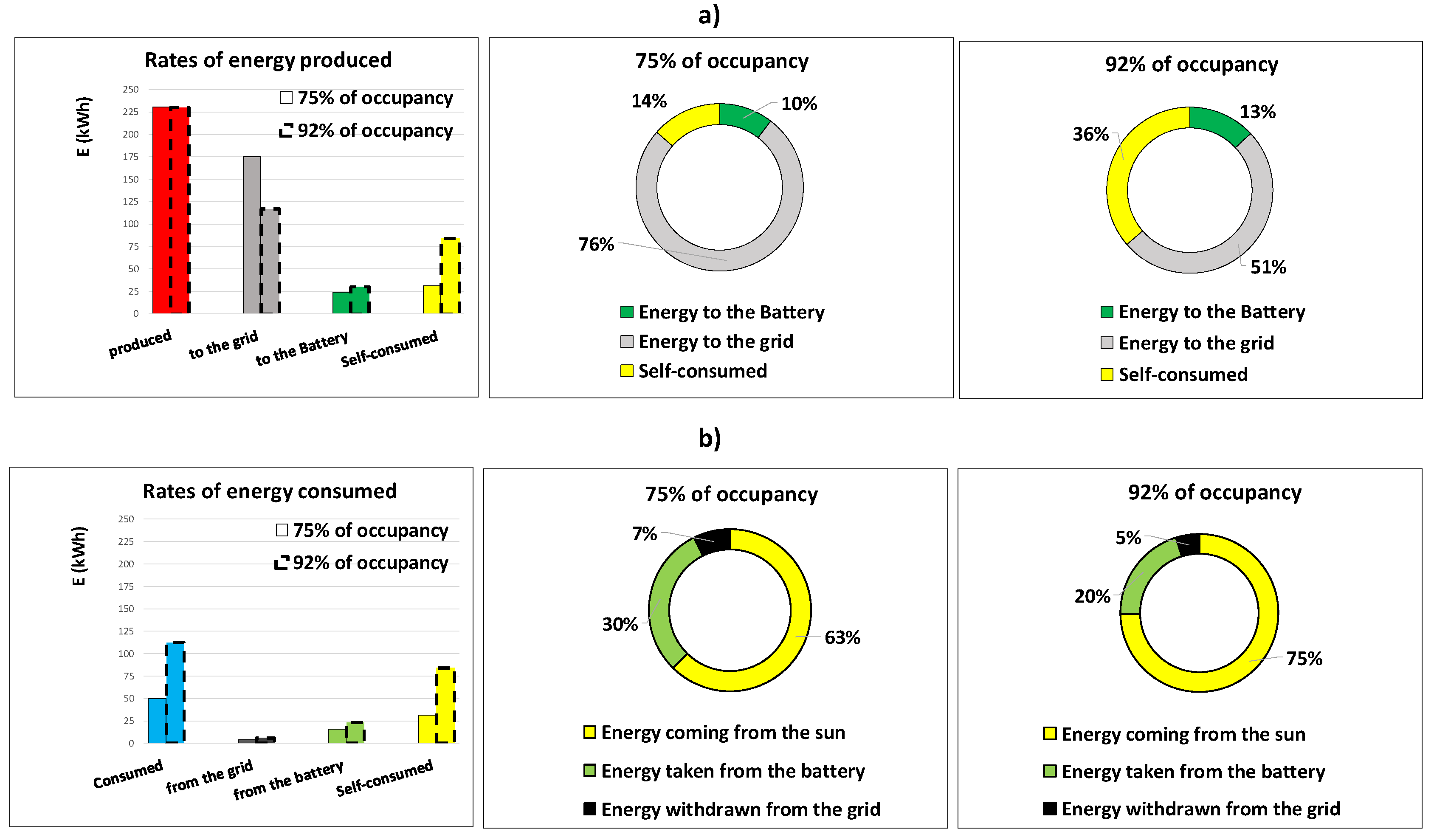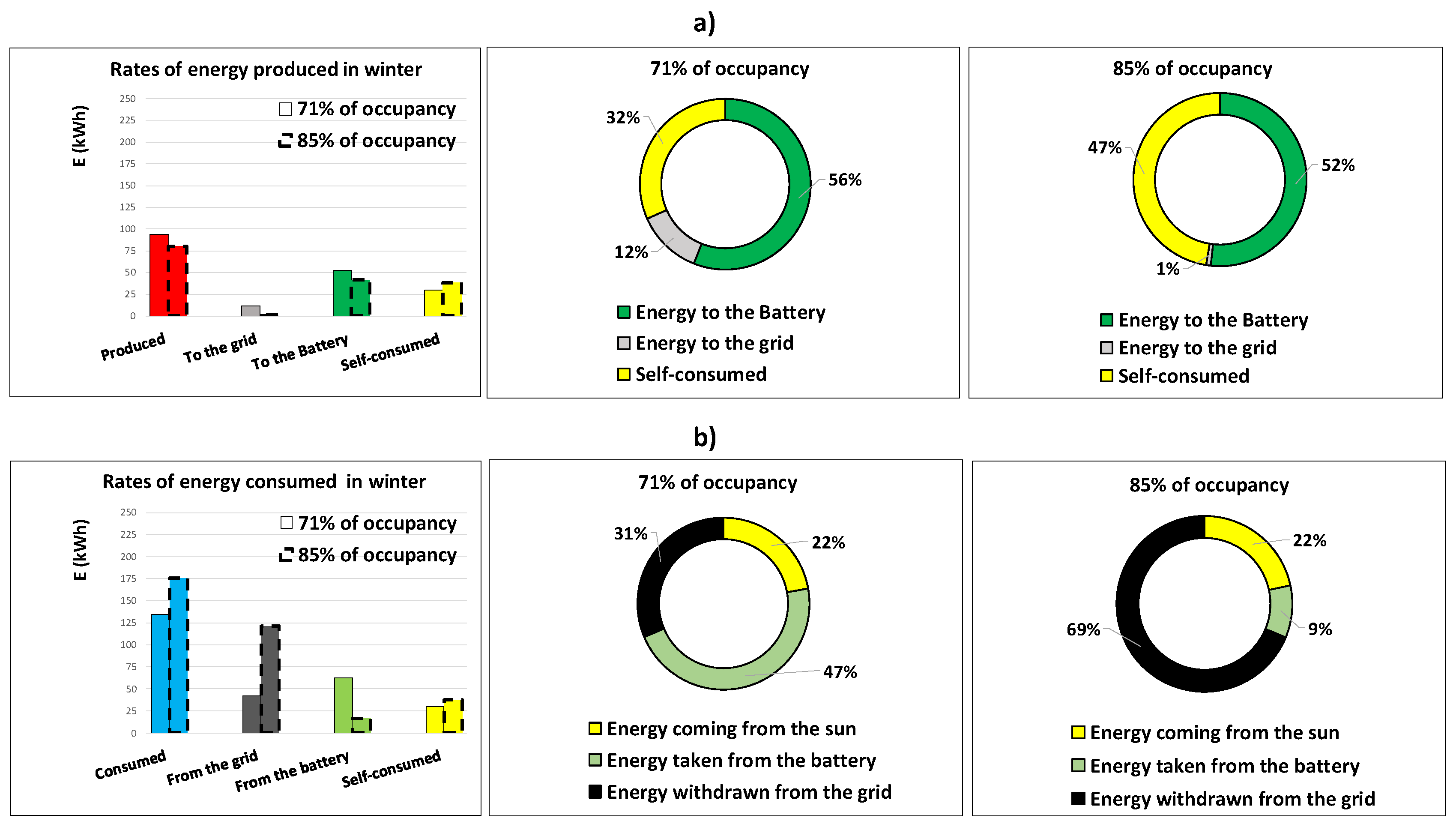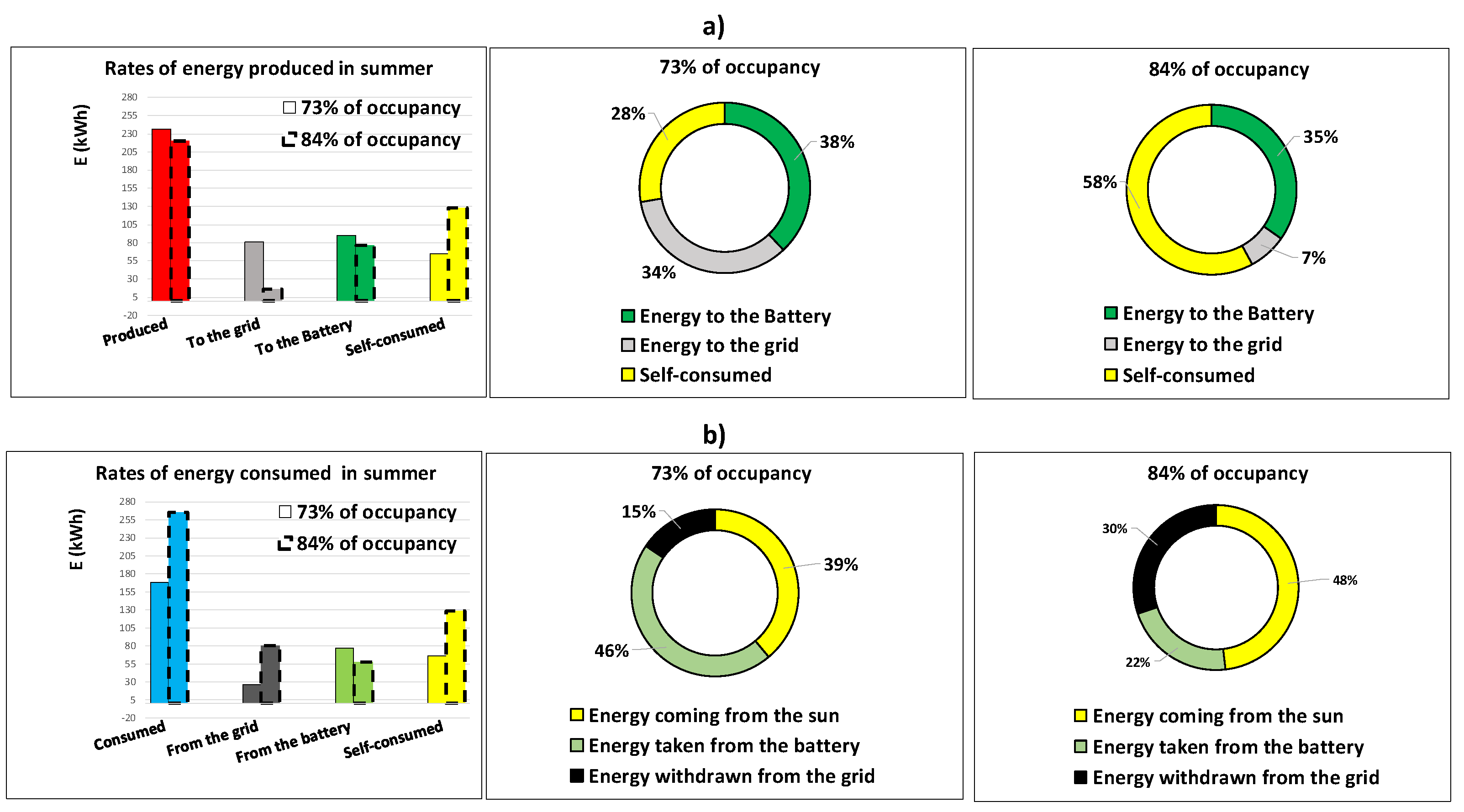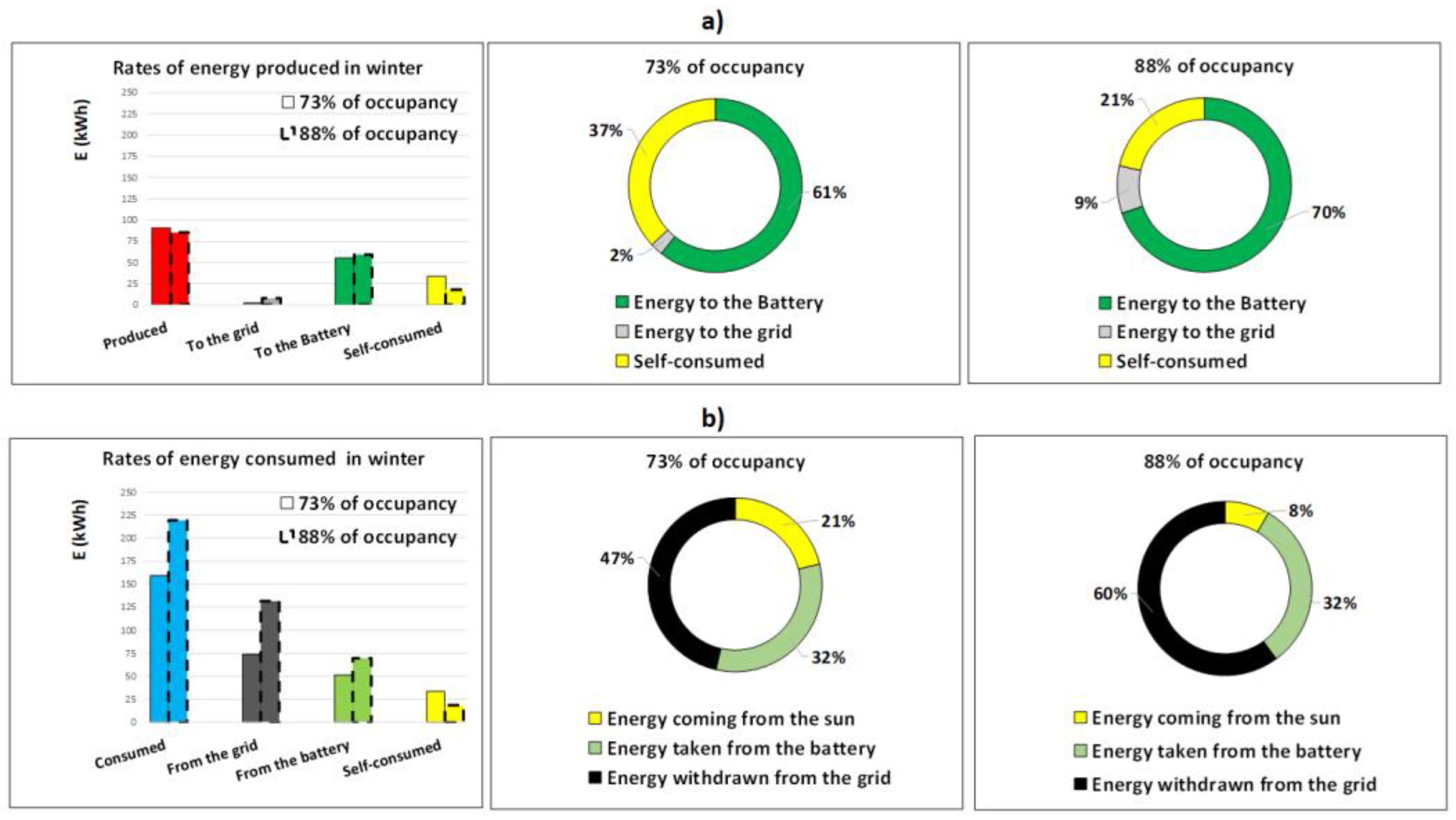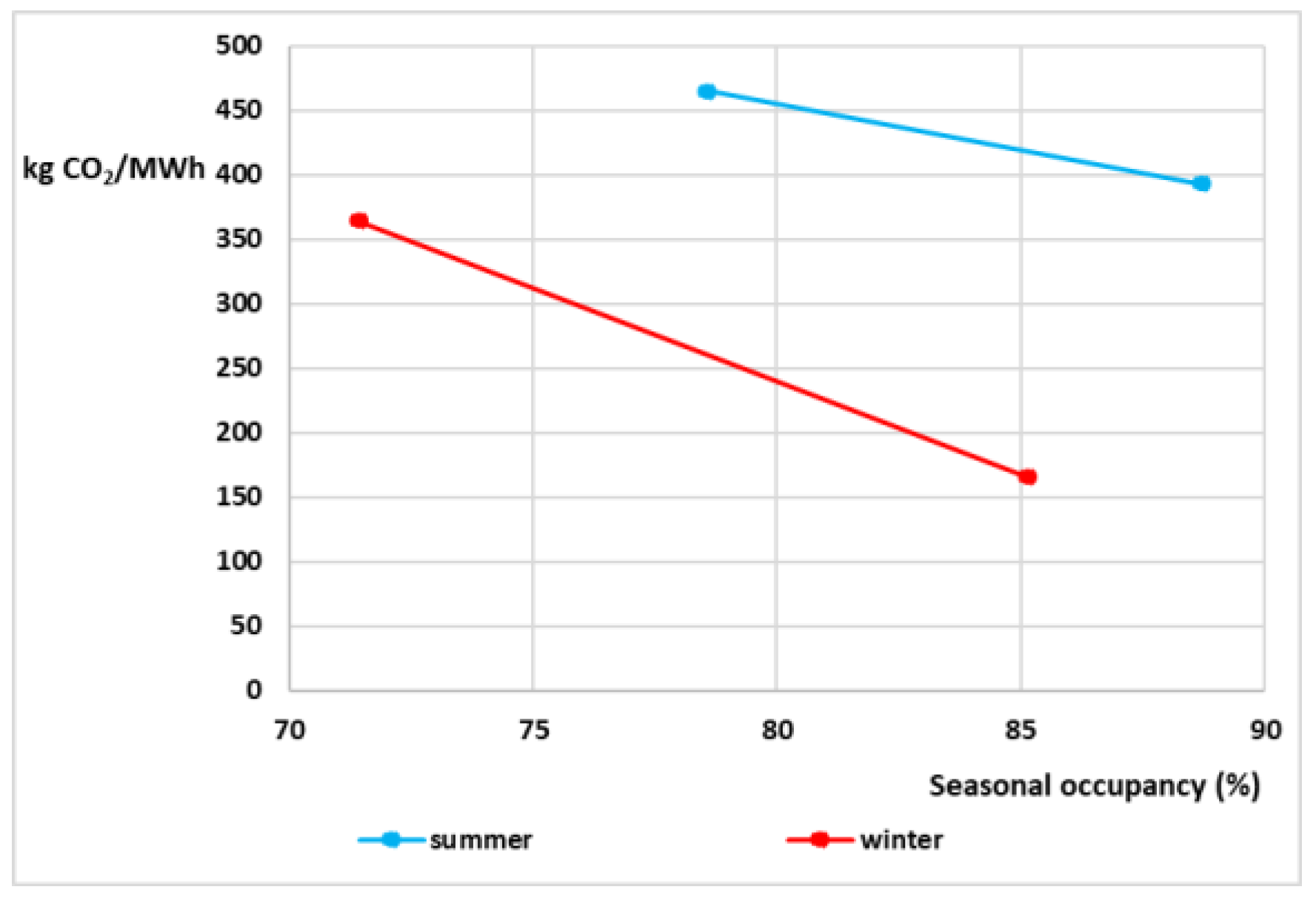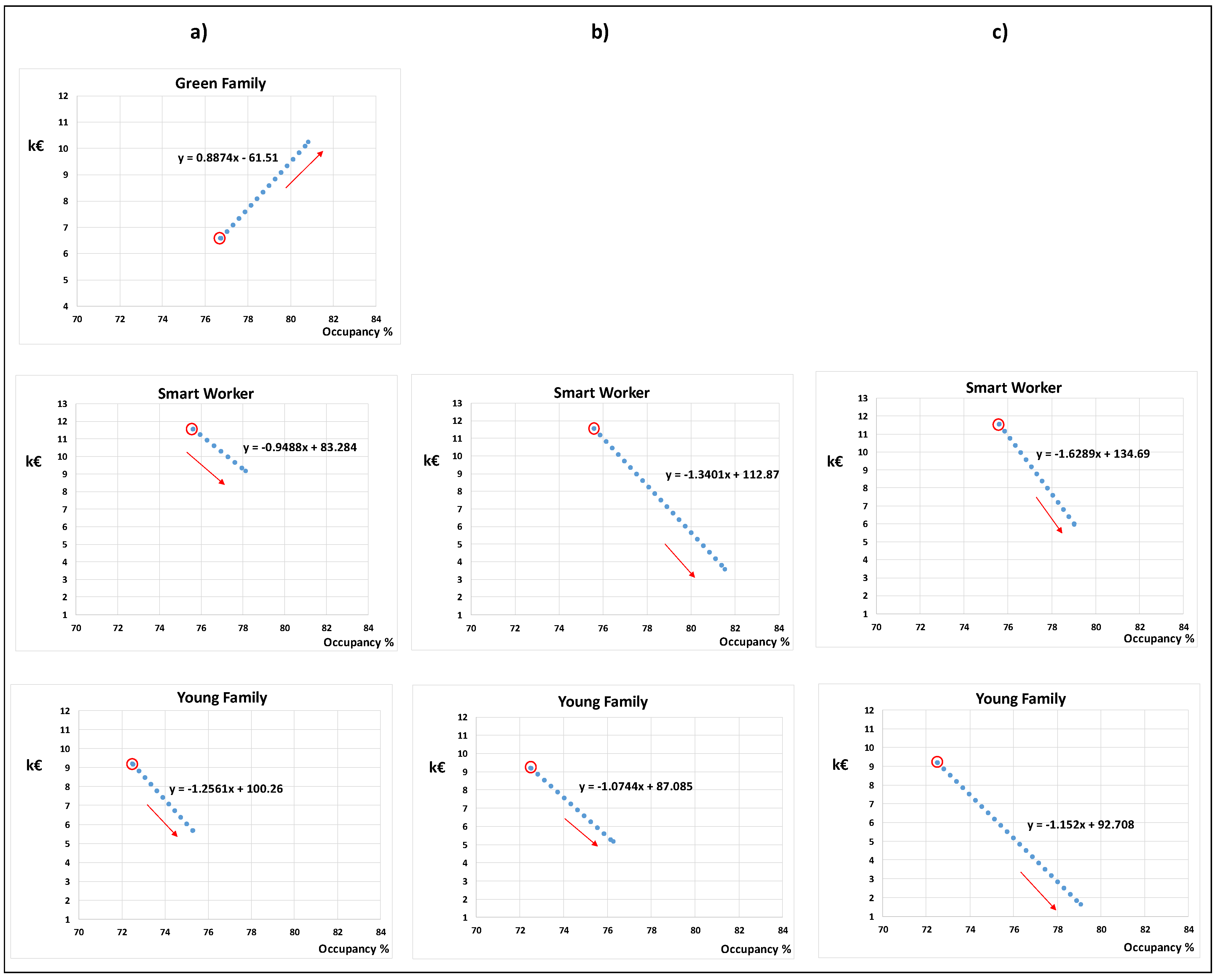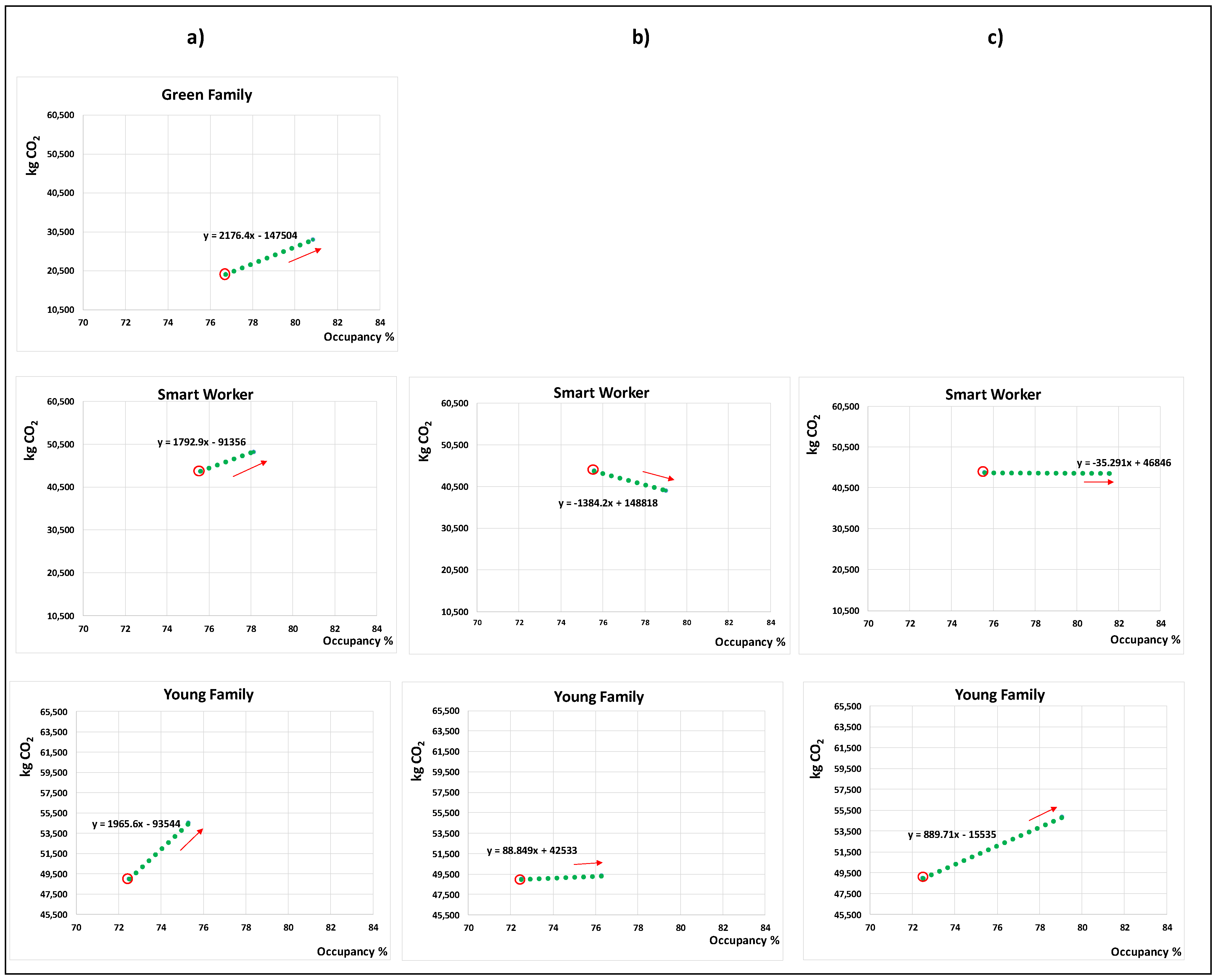Currently, the building sector is responsible for about 40% of global greenhouse gas emissions, 36% of all energy consumption, 50% of raw material extraction, and more than 30% of drinking water consumption [
1]. The initiatives launched at COP21, held in Paris in 2015, had the aim of inducing the parties to focus on the creation of zero-emission, efficient, and sustainable buildings with the coordination of the United Nations Environment Program (UNEP) and the International Energy Agency (IEA). In Europe, according to data provided by Eurostat, buildings contribute 40% of energy consumption, exceeding transport and industry [
2]. Even in Italy, buildings are the leading sector for energy consumption, and over two-thirds of this comes from residential buildings [
3]. It is therefore increasingly necessary to use technologies capable of exploiting renewable energy sources to improve the energy sustainability of constructions and minimize greenhouse gas emissions. The effectiveness of this approach was demonstrated by the reduction (20.9% in 1990–2022) of total Italian greenhouse gas emissions obtained by the growth in energy production from renewable sources [
4]. Among these, in the residential sector, solar photovoltaic (PV) has spread mostly in recent years [
5], thanks to the capability of reducing CO
2 emissions during the operating phase [
6], self-producing energy [
7], and saving on bills [
8]. The high diffusion of PV technology is certainly linked to policies and incentives implemented in various countries. According to an estimate by BloombergNEF (BNEFF), during the two-year period 2021–2023 there was continuous growth in the photovoltaic sector around the world, going from 182 GW to 367 GW. China is the country that invests the most in this market, followed by Europe in terms of gigawatts installed [
9]. Since 2008, Italy has been an active European country in policies that support the diffusion of photovoltaics. From the solar photovoltaic statistical report of the Italian Energy Services Manager (GSE) [
10], the increased power installed starting from 2008 is evident with the establishment of the incentive system (called “energy account”), which culminated in 2011–12. A phase of slower growth followed until 2018, and then quicker growth resumed with a strong rise in 2019–2022. On the other hand, multiple studies have demonstrated that energy sustainability objectives in buildings can be achieved by the development of technology and financial support, but also by including the human factor. Annex 66 of the IEA EBC (“Simulation and definition of occupant behavior in buildings”, 2013–2017) in fact underlined the necessity to take a new look at the way in which occupants are incorporated in building design and in operational practices throughout the life cycle [
11]. The successive IEA EBC Annex 79 (“Occupant-centric building design and operation”, 2018–2024) developed data-driven occupant modeling strategies and digital tools, and establishes the importance of occupant-centric building operation [
12]. In particular, the effect of occupant behavior on energy consumption has been widely demonstrated by various researchers, such as Yu Z. et al. [
13], who carried out analyses on four clusters of buildings through the selection of 80 similar districts in Japan. Buildings in the same group were characterized by four influencing factors, including occupant behavior, that had similar effects on energy consumption. To evaluate these effects, the authors used a gray relational analysis (GRA); the larger the gray relational degrees, the greater the impact of the influencing factors. It emerged that the number of occupants (GRA = 0.7) and the thermal dispersion coefficient (GRA = 0.8) had the greatest impact on energy performance. Braulio-Gonzalo M. et al. [
14] proposed a methodology to demonstrate how the inclusion of user profile variables can improve the energy consumption forecasting model. In particular, the authors classified the buildings according to four criteria—type of occupancy, adjacency, number of floors, and year of construction—obtaining 30 archetypes that represented the residential heritage of the city. Moreover, a questionnaire was completed for each family to define the characteristics of the users. The authors then developed two energy forecasting models, one of them containing the covariate inherent to the occupants’ profile. The observed and predicted values demonstrated that including occupant profile variables can improve energy prediction. Zhang C. et al. [
15] introduced a model-based prediction method to relate occupant behavior and electricity consumption. The authors focused on Chinese university complexes (dorms and libraries), specifying that university dormitories are similar to residential buildings. The authors created a parameter called “electricity consumption–behavior correlation” to illustrate the results and underline a quantitative correlation model between electricity consumption and behavior. Chen S. et al. [
16] also summarized, through a literature review, the three main categories of behavior that most influence the energy consumption of buildings, namely occupancy, interactions, and behavioral efficiency. It emerges that energy efficiency (behavior awareness and modification) is the dominant factor, suggesting the importance of guiding occupants to identify their unsuitable behavior and help them to make intelligent decisions. Therefore, since occupants’ behavior significantly influences the electricity consumption of dwellings, the economic and environmental advantages connected to a photovoltaic system can also be strongly dependent on human variables. In line with this consideration, Muller A. et al. [
17] presented a parametric study to estimate the self-consumption and self-sufficiency of domestic photovoltaic systems in relation to the type and size of the family. The authors combined a model for stochastic occupant behavior with the IDA ICE building simulation software, and a building archetype was used to investigate three energy performance standards equipped with a traditional PV system. The occupants’ profiles were simulated with the Peak Time model for four domestic groups differentiated by employment and working status, generating 100 virtual families. The authors developed a graphical procedure, finding a correlation between photovoltaic self-consumption and family size. Jiang Z. et al. [
18] proposed a method to improve the energy flexibility of renewable technologies, introducing an occupancy-based model predictive control (OBMPC) combined with a photovoltaic battery rationalization system. Occupancy data were extracted from the daily load usage of 1299 users in Arizona (USA). The study results demonstrated how OBMPCs can improve flexibility for both individual buildings and cluster-level buildings, resulting in financial benefits, peak load shifting, and load factor improvements. Liu X. et al. [
19] proposed a home energy management systems (HEMS) model integrating photovoltaics and electric vehicles into HVAC programming in an occupant-centric manner. The results of simulation showed that it is possible to save energy costs and maintain a high level of occupant comfort by comprehensively incorporating occupant thermal comfort, clothing behaviors, and state-of-charge concerns for EVs into the HEMS model. Moran F. et al. [
20] examined five historic homes in Bath (England), evaluating the carbon reduction potential of photovoltaic technology. The aim of this investigation was to understand whether the price of altering the historic environment through PV installations was truly worth the contribution that such measures could make to the global challenge of climate change. The production and export of electricity and the actual demand by the occupants were monitored for one year to establish representative profiles. It emerged that, on average, 56% of the electricity generated by photovoltaics was used inside the house, obtaining a reduction of CO
2 equal to 19%. Moreover, it was possible to achieve higher photovoltaic electricity use (67%) and reduction of CO
2 emissions (up to 23%) where energy use patterns were synchronized with photovoltaic electricity production. According to these investigations, the variation in self-consumption was mainly attributable to the attitude and behavior of occupants (environmental sensitivity) and occupancy models.
The aforementioned studies demonstrate how the operation of a domestic photovoltaic system is significantly influenced by the occupants’ behavior. However, to date, it has not been well explored to what extent the behavioral aspect can modify the economic and environmental advantages connected to these technologies, considering both the form of incentives and technical features. This study aims to answer these questions by investigating three domestic users who differ in social and behavioral characteristics. Initially, a data collection phase was conducted by face-to-face questionnaire and energy monitoring. Then, it was possible to identify representative seasonal trends in energy rates and observe the typical operation of the photovoltaic systems equipped with electrical storage, thanks to the information provided by the users about their habits and presence at home.
Energy, economic, and environmental evaluations were successively carried out, quantifying the variation in the payback time of the systems, the final economic availability, and the carbon dioxide emissions as a function of the occupants’ presence at home. The main objective was to understand to what extent energy consumption monitoring and data collection by survey can be an effective instrument to detect how different levels of occupants’ presence at home and user behavior can modify the benefits and performance of the PV systems. Following this approach, a new index was introduced, the Social Investment Index (SII), as an intuitive quantitative estimation of the profitability of the economic investment targeted to reduce CO2 emissions, evaluating how this index changes with the users’ behavior.
